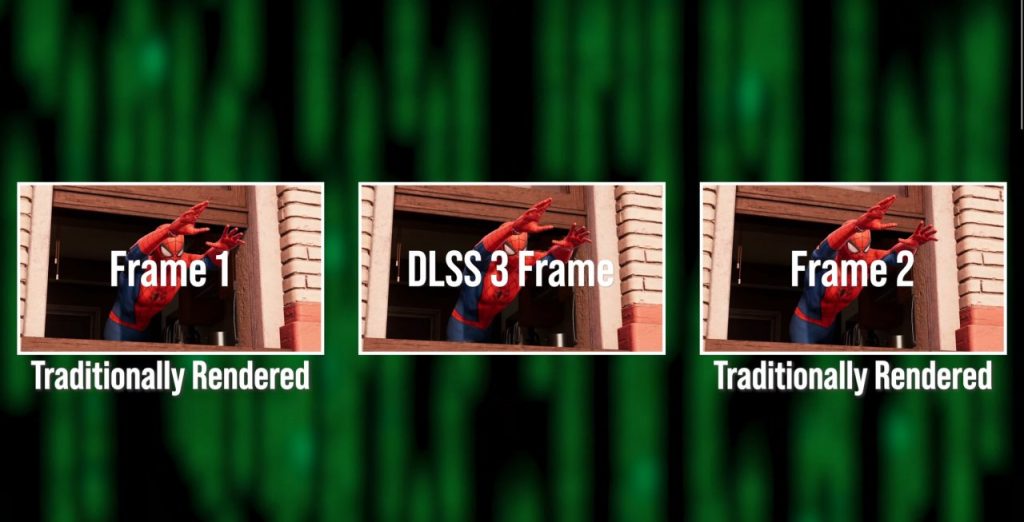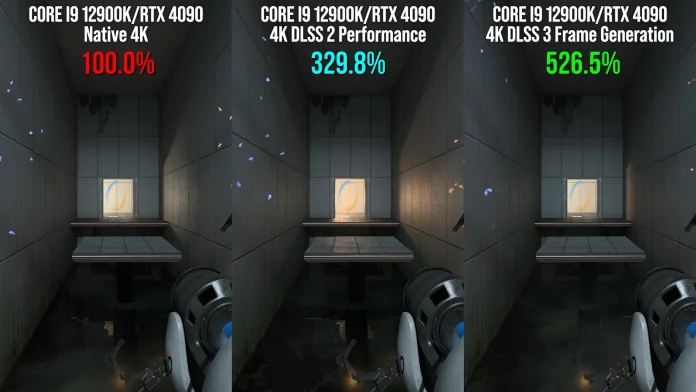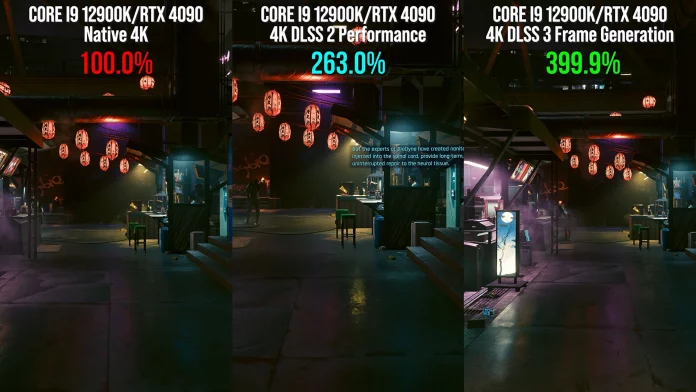When Nvidia revealed the Geforce RTX 4000 series and “Ada Lovelace” architecture, it wasn’t just hardware on the list. Along with the redesigned Tensor cores, a new version of the company’s scaling technology Deep-Learning Super Sampling (DLSS) also follows. As before, the goal is still to deliver fewer pixels and then scale up to the screen resolution, to get the frame rate without losing too much image quality.
The new version, which has the same name briefly but goes up to number three, only works with RTX 4000 series graphics cards. So it takes until October 12th before the technology is officially released. Now the first early test is to find his way through digital foundry, which through Nvidia gained access to early and incomplete versions of DLSS 3 for Portal RTX, Marvel’s Spider-Man, and Cyberpunk 2077. With permission to show test results, came the catch. Digital Foundry is not allowed to display any exact frame rates, so only relative performance is given.
Essentially, DLSS 3 is not a new upgrade tool, but rather a combination of upgrade from DLSS 2, Reflex technology and a new addition that generates and complements intermediate frames. For the latter, both machine learning and hardware play a role in creating the images, which are generated by analyzing different types of game data, including motion vectors. For each pair of frames that the graphics card creates, an additional frame is generated that is pushed between the two out of the render queue.
With more frames in play, comes higher response time, and that’s where Reflex comes in. It’s basically a technique for precisely reducing latency, which is baked into DLSS 3. At best it should make up for it completely, in worst case it should at least lower latency to less noticeable levels. According to Digital Foundry, they haven’t yet had any problems with the three titles tested, but they add that the technology likely isn’t ideal for esports titles where every millisecond counts. However, it is possible to disable both the Reflex and Interpolation bits.
Image source: Digital Foundry
All three games see a decent performance boost when scaling from 1080p to 4K, even compared to DLSS 2. There’s a particularly big difference in the Portal RTX, where the highlights are rendered using Traceroute It means a heavy load. With DLSS 3 and interpolation, a frame rate five times higher is reached, compared to an increase of just over three times with DLSS 2. Here, Reflex is also said to reduce latency, which does not cause any major problems.
For Spider-Man, the game has some leagues with overlapping frames. The images that DLSS generates aren’t quite perfect, something that becomes more apparent in fast-moving games, especially near the game’s camera. It does cause artifacts in some cases, but according to Digital Foundry, it’s mainly when the image is visible at the seams that it really becomes noticeable. In actual games, especially with the 120Hz image refresh rate, it is said to not affect the experience that much.
More numbers and detailed testing after the launch of the Geforce RTX 4000 series, which begins with the RTX 4090 on October 12. According to Nvidia, DLSS 3 should not be more difficult to implement than its predecessor until launch 35 different games and apps Stand at the ready with support.
For those who want to dig deeper into the results of the Digital Foundry test, both the video summary and Related Article.

“Entrepreneur. Freelance introvert. Creator. Passionate reader. Certified beer ninja. Food nerd.”











More Stories
Logitech Steering Wheel News: New Steering Wheels, Gear Lever, and Handbrake in Direct Drive Series
Garmin Launches inReach Messenger Plus App
Why Rare Earth Metals for Electric Cars Are Crucial for Modern Mobility